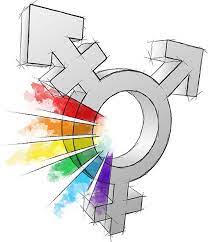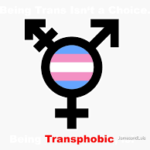In our ever-evolving understanding of gender and sexuality, it’s crucial to clarify the distinctions between various terms that often get conflated. Two such terms are "transgender" and "hermaphrodite." While they may appear similar at first glance, they refer to very different aspects of human identity. This article aims to break down these concepts, their implications, and the importance of language in fostering an inclusive environment for everyone.
Understanding the Basics: Transgender vs. Hermaphrodite
At the core of the conversation surrounding gender, "transgender" and "hermaphrodite" represent two distinct categories. Transgender refers to individuals whose gender identity does not align with the sex they were assigned at birth. This term encompasses a wide range of identities, including trans men, trans women, and non-binary individuals, all of whom may experience gender in diverse ways. In contrast, "hermaphrodite" is an outdated term historically used to describe intersex individuals—those born with biological characteristics of both male and female sexes. However, most people in this community prefer the term "intersex" to reflect more accurately their experiences and identities.Menopause Bioidentical Hormone Replacement TherapyWhat Is The Difference Between Estrogen And Estradiol
Understanding these basics helps clarify the conversations surrounding gender and sexuality. While transgender individuals navigate societal norms and personal identity related to gender, intersex people often contend with biological variations that are typically classified as male or female. Recognizing these differences is crucial for respectful dialogues, as it allows for a more nuanced understanding of the complexities involved in gender identity and biological diversity.
What Does Being Transgender Really Mean?
Being transgender is rooted in a person’s internal sense of self and their understanding of their own gender. For some, this means transitioning socially or medically to align their physical appearance with their gender identity, while others may choose not to transition at all. The journey of a transgender person can be deeply personal and often involves confronting societal norms, discrimination, and a quest for acceptance. In essence, it’s about aligning one’s external presentation with their internal truth.
It’s important to note that not all transgender individuals go through the same experience. Some may choose to undergo hormone therapy or surgery, while others feel that their identity is valid without any medical intervention. The key takeaway here is that being transgender is not merely about physical changes; it’s fundamentally about the acknowledgment and validation of one’s gender identity, which is unique to each individual.
Exploring the Concept of Hermaphroditism
Hermaphroditism, more accurately referred to as intersex, describes a variety of conditions in which a person is born with reproductive or sexual anatomy that doesn’t fit typical definitions of male or female. This can manifest in various ways, such as having ambiguous genitalia, a mix of chromosomal patterns, or hormonal levels that differ from traditional male or female classifications. Intersex people may identify as male, female, both, or neither, further complicating the understanding of biological sex.
Historically, the term "hermaphrodite" has been used in literature and science, but it often carries stigmatized connotations and fails to capture the lived experiences of intersex individuals. Many in the intersex community advocate for the use of "intersex," as it is seen as more respectful and accurate. Understanding these nuances is essential for fostering a supportive environment in which intersex individuals can express and identify themselves authentically.
Key Differences: Gender Identity vs. Biological Traits
A fundamental difference between transgender individuals and intersex people lies in the concepts of gender identity and biological traits. Gender identity is about how individuals perceive themselves and what gender they identify with, while biological traits refer to the physical characteristics a person is born with. For transgender individuals, their gender identity often diverges from their assigned sex at birth, whereas intersex individuals have biological variations that complicate traditional categories of male and female.
This distinction is crucial as it underscores the multifaceted nature of identity. While transgender people may seek to align their gender identity with their physical appearance, intersex individuals may navigate a world that often tries to force them into one binary category or another. This awareness can foster empathy and understanding between different communities, allowing for a more inclusive discussion around gender and identity.
Common Misconceptions About Transgender People
One of the prevalent misconceptions about transgender people is that their identity is merely a phase or that they are seeking attention. In reality, being transgender is not a choice but an intrinsic aspect of who someone is. Many transgender individuals face significant challenges in their journey, including societal rejection, discrimination, and mental health struggles. Validating their identity is key to supporting their well-being and happiness.
Another common myth is that transgender individuals are just confused or misinformed about their gender. However, many transgender people have a deep understanding of their identity, often from a young age. Awareness and education about transgender experiences can greatly diminish stigma and promote acceptance, allowing for a more supportive environment for everyone.
The Biology of Hermaphroditism Explained Simply
Intersex variations arise from a combination of genetic, hormonal, and environmental factors that affect sexual development. For instance, some intersex individuals might have XY chromosomes, typically associated with males, but their bodies may develop with ambiguous genitalia. Others may have XX chromosomes normally associated with females but exhibit male anatomical traits. These biological differences reflect the complexity of human development and challenge the simplistic binary of male and female.
It’s essential to emphasize that intersex is just one aspect of a person’s identity. Many intersex individuals identify firmly as male or female, while others may identify outside these categories. The biology of intersex conditions illustrates that nature itself is more complex than a binary interpretation, emphasizing the importance of recognizing and respecting diverse identities.
Why Language Matters: Terms to Know and Use
Language plays a critical role in shaping our understanding of gender and identity. The terms we use can either contribute to inclusivity or perpetuate harmful stereotypes. For instance, the term "hermaphrodite" is increasingly viewed as derogatory, with "intersex" being the preferred term in contemporary discussions. Similarly, understanding the different pronouns and identities within the transgender community is vital for respectful communication.
Using correct and affirming language can significantly impact the lives of transgender and intersex individuals. When people feel seen and validated through language, it fosters a sense of belonging and acceptance. Educating ourselves about these terms helps create a more compassionate society, where everyone can express their identity freely and confidently.
Embracing Diversity: Respecting All Gender Identities
To truly embrace diversity, we must recognize and respect all gender identities, including those of transgender and intersex individuals. This means listening to their experiences, advocating for their rights, and challenging societal norms that seek to marginalize them. Celebrating diversity involves not just acceptance but active support, ensuring that everyone has the opportunity to live authentically without fear of discrimination or prejudice.
By fostering an inclusive environment, we contribute to a society where varied identities are acknowledged and respected. Each individual’s experience adds to the rich tapestry of human identity, and embracing this diversity not only enhances our communities but also promotes a more understanding and compassionate world.
In summary, understanding the differences between transgender and intersex identities is crucial for promoting respect and acceptance in our society. By engaging with these concepts thoughtfully and using inclusive language, we can contribute to a supportive environment for all individuals. Whether through education, advocacy, or simply listening to personal narratives, we can help pave the way for a world where everyone feels validated in their identity.


